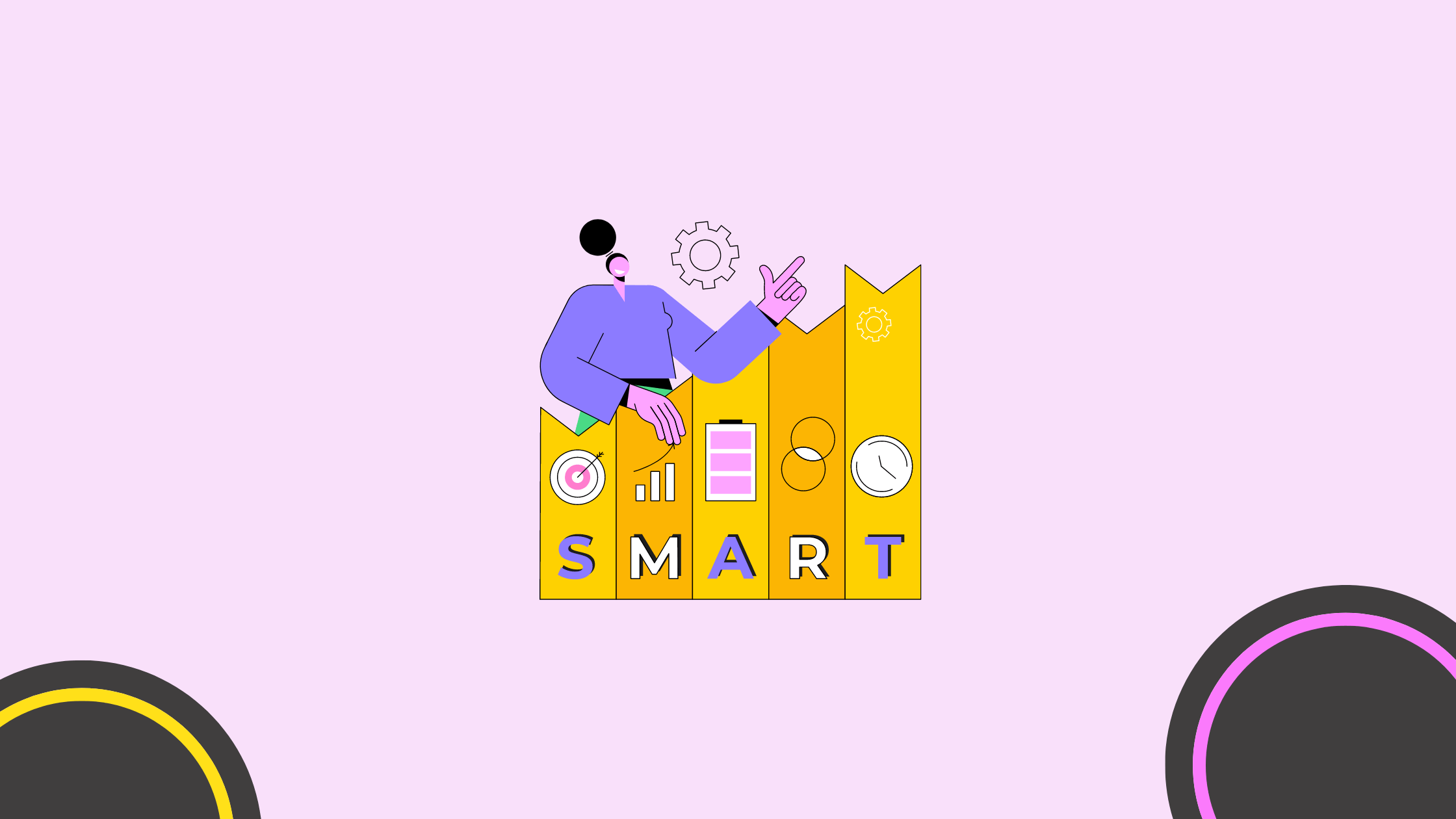How to Integrate Generative AI into Your Content Marketing Strategy & Processes
Improve and Future-proof your Brand & Demand Gen Strategies, Marketing team & Processes
Yakup Özkardes-Cheung, Founder of ContentAITools.com, & Erwin Lima, co-founder and chief storyteller at StoryLab.ai
Generative AI is here, and it’s not going anywhere soon.
How are you, as a marketing leader or team, going to go beyond the odd little — quaint or sometimes, if you’re honest, breathtaking — experiment with generative AI, and really future-proof your content marketing strategy and processes?
Here at StoryLab.ai, we’re focused on helping you do better as a marketer or marketing leader. In a multitude of ways:
- We try to give you the fundamental insights we’ve learned over the years that helped us become better marketers; we strive to give you the learnings, strategies, tactics, and tools that we’ve developed and gotten the best results with;
- We offer you a high-quality technological solution that makes the process of content creation faster, easier, and more effective — along with trying to offer you the best ways to set up, plan and execute your marketing strategies and processes, so you get the maximum benefits out of your brand, your stories, your team, and our tool.
But we’ve yet to seriously dive into a quite fundamental question, being:
How do we holistically integrate Generative AI Content tools into our marketing strategies and processes?
What you’ll find in this article

In this article, which we’re creating in collaboration with Yakup-Özkardes Cheung, the Obi-Wan Kenobi of AI Content Marketing and founder of contentaitools.com, you’ll find:
- A quick overview of the reasons why you want to take the integration of AI Content & tools in your marketing strategy and processes seriously, way beyond simply experimenting or creating single pieces of content with them, here and there.
- What types and formats of AI Content should you take seriously? Because while we here at StoryLab.ai are almost completely focused (and in our product, so far, absolutely exclusively focused) on text-based content, we recognize there’s a whole world out there of audio-visual formats that may or may not make sense for you to take into account.
- How to embed these AI Content creations and tools into your marketing strategies and processes, in such a way that you not only improve the speed, ease, and effectiveness of your Brand and Demand strategies, but also future-proof them.
I’m really happy to be co-creating this article with Yakup, because he’s one of the few people I’ve seen who are genuinely invested in helping people succeed in content marketing with AI — and has been committed to this space since way before it was cool.
Yakup is an AI Content Marketing Consultant and Speaker, among other things — and overall a pretty cool dude.
Here’s Yakup:
“I hope that readers will understand the importance of using content AI tools to enhance their content marketing strategy. By learning about the benefits of AI tools and how they can be integrated into their workflow, entrepreneurs and marketing leaders can improve their content creation process, increase engagement with their audience, and ultimately drive business growth.”
Let’s get into it.
Why you should take the integration of AI Content and Tools into your marketing strategies, tactics and processes very, very seriously

If you haven’t been living under a rock — you’ll have noticed that we crossed some kind of eerie threshold when it comes to the capabilities of AI tools to create content, be it written, or visual, and sometimes even musical, that rivals the content humans create. And that sometimes surpasses it, but — maybe most importantly — content that can often hardly be distinguished from human-generated content.
I heard a song a few months ago that sounded like a collab between Kanye and Drake, that never happened.
It’s nearly impossible for you as a reader, to discover or guess which parts of this post will have been written with the help of ChatGPT, StoryLab.ai, or any other AI content writing tool. Funny, right?
Instead of waiting for the fad to pass, and the hype to blow over; here’s why you and your team should take note and seriously think about how to integrate AI content generation tools into your marketing process:
- Your competitors are doing it, too; Econsultancy reported that already in 2021, 18% of North America-based marketers were using AI for content creation, and 23% used it for creative and design work. In 2023, the percentage of marketers adopting generative AI is up to 73% according to MarTech.com.
- Generative AI saves creators on average 5 hours of work each week,
As a survey among 1,000 content professionals in the US, UK, and Australia pointed out; - By 2026, 90% of online content will be made by or with the help of AI — As predicted by trendwatchers and experts in the field, interviewed by investigative journalist Nina Schick for her book Deepfakes: The Coming Infopocalypse. How are you going to stand out from this sea of content?
- Generative AI can really make an impact beyond the obvious places– And for some people already is making — an impact beyond the obvious places in your marketing process, which would be the actual content creation part: you don’t want to miss the potential gains and benefits in other areas.
This makes it imperative that you think holistically and strategically about how you are going to use the technology, combined with your unique story, your unique people, and your unique relationships with your customers and/or audience and partners, to stand out in a growing sea of ‘cyborg content’.
And please don’t forget; thinking holistically also means taking into account the ethical considerations connected to marketing, and to the application of advanced digital or other technologies. More on that later in this article.
Yakup:
“One of the key advantages of using AI in marketing is its ability to deliver results faster and more efficiently. For instance: by analyzing data and identifying patterns, AI can help marketing teams create more relevant and targeted campaigns that resonate with their audience. This ultimately leads to better ROI and a higher conversion rate.”
Alright, so what should you actually consider using AI tools for, and where do you start?
What types of AI Content & Generative AI Tools should you take seriously?

Here on the StoryLab.ai blog and in other spaces, we’ve spoken extensively about how to use generative AI to create text-based content, ranging from;
- Creating your Brand Story with the help of AI,
- Building a Blog Article,
- Creating Social Posts, Ads, Emails, Video titles, and more;
- Generating 20+ Social Posts from a single post or source;
- Generating entire marketing campaigns from one source.
As you will know from reading our material, or from playing with our own or any other copy generator tools out there; this can help save a ton of time and free up your energy and creativity to create something truly excellent, in cooperation with the technology.
Even for something as relatively simple as copy-content creation, the possibilities are nearly endless. However, there’s quite obviously an entire world of content far beyond simply strings of words on a screen.
Luckily, we have Yakup here to share with you what he’s seen, learned, and gotten results with for himself as well as his clients. What are some other content formats or avenues for using Generative AI that are really helpful at this point in the development of this technology?
Deepfake Software for Marketing

Yakup:
“Firstly, there’s [Ethical] Deep Fake Software: A tool like Colossyan can be used to create engaging and visually stunning content that captures the attention of your target audience. This could include explainer videos, product demos, or even virtual tours.”
Check out Colossyan’s product demo, here:
AI Video Snippet Generators for Marketing:
Yakup:
“With Pictory, you can easily create short video snippets from longer podcasts or live stream content. These snippets can be used to create engaging video content for social media or other marketing channels.”
Here’s a product demo on how to use Pictory:
A few final pointers on the use of AI tools for improving your content marketing processes from Yakup:
“While AI tools can be incredibly helpful in streamlining and enhancing your content marketing efforts, they are ultimately just a tool. It is important to have a well-defined content strategy in place that aligns with your business goals and target audience.
Additionally, training your team to use these tools effectively can help you get the most out of them. This includes understanding the strengths and limitations of each tool, as well as how to integrate them into your broader content marketing strategy.”
How to Integrate Generative AI into Your Content Marketing Strategy & Processes For Sustainable Growth

First this:
In general, our stance here at StoryLab.ai, on creating content with the help of AI, is the following:
Use AI as a smart, junior content creation assistant — and become the editor-in-chief yourself. In other words: collaborate with the AI tools to become a better storyteller yourself, and find ways to get the most out of yourself, your team, and your story — and out of the technology.
Use AI in content creation primarily to:
1. Ideate — Kill the blank page.
2. Vary — Come up with new versions of what you’ve already made.
3. Scale — Create smaller, simpler copy much faster.
In the segment below, you’ll find out how this translates to embedding AI content creation tools in all of the steps and moving bits and pieces in your content marketing process.
One last note from my man Brian, the CEO here at StoryLab.ai:
“It’s really important for people to realize that AI content generation should not be viewed as an excuse to simply churn out larger quantities of bad quality content, faster. It’s really about speeding up the process to improve the quality of the content and the value you’re creating for your audience.”
Setting up or redesigning your content strategy and process

In a previous article, we described the eight basic steps to setting up your content strategy, and touched lightly on the processes involved. Here, we will follow the same basic eight-step plan — and see where some of the AI content creation tools that we discussed above can fit in. Also, we’ll see how these tools can save you time while maximizing the output of your team and content in terms of value, fun, and ROI.
1. Identity and value proposition
Your Brand Story together with the visual and other aspects of your Brand Identity, should be at the core of how you approach your content and other marketing strategies and tactics. Who are you and what are you about? What are you bringing to the market, and where are you trying to get?
Nothing, especially nothing related to marketing or content, even makes sense before you have a clear, compelling, and concise answer to these questions.
In this previous article, we dive into how to create your own Brand Story, with a Brand Story template to make the process more fun, easier, and more effective.
Here’s how Generative AI can help in this crucial process:
- Use AI Copy generator tools to ideate, and to create new variations for the bits and pieces that make up your Brand Story. For instance, you can use StoryLab.ai’s Social Caption Generator, Blog Intro or Tone Changer to either create copy for your Brand Story from input in the form of keywords and phrases.
- Or, better yet, you can write the first version of your Brand Story text blocks yourself, and then input these blocks in one of the above generators —and use AI copy generator tools to come up with different variations, edit and polish, until you hit the exact right wording.
From a pure content creation standpoint, this step is where you start to create the direction and guardrails for your messaging, Tone-of-Voice, and visual and other Brand Guidelines — but you will only finish them as a full V1 after completing all of the steps below, and iteratively improve them as you go along.
2. Audience and needs
The second step to creating your Content Strategy — or Brand Messaging or Demand Generation Strategy for that matter — is figuring out what it is that people you could help, actually need (with research and by talking to the actual people).
Doing some keyword research is important here, too — read more about basic SEO and keyword research, here. Because this helps you figure out what people in your target audience are actually searching for, and in what exact words.
Figure out who your target audience actually is, what they’re actually already searching for online, and what language they’re using to do it— this helps you create a better strategy and much better content as well.
Here’s how Generative AI can help in this step of the process:
- Use a tool like ChatGPT to figure out what the best questions might be to pose to your audience in interviews or questionnaires. Don’t overestimate, but also don’t underestimate the reasoning abilities of tools like these.
Yakup:
“Using prompts to train chatGPT is a great way to help the AI understand your potential target audience and their struggles, problems, and dreams. That is a great way to find more insights about your target audience.”
- Use generative copy tools like ChatGPT to ideate questions based on your input, or to generate variations to questions so you can pick the best set.
- Use generative copy-based AI-tools to summarize, rephrase or otherwise to analyze and condense the insights you’ve gotten from your research.
3. Set your goals and connect them to those of your audience
It’s imperative to set clear, ambitious, and at the same time realistic goals for any plan or strategy. What are the main things you are striving to achieve?
After doing this, you, of course, have to figure out how you can help and educate your audience. And decide on what a reasonable goal is that you could achieve for yourself with the help of content marketing and its more ROI-driven bigger brother, Demand Generation.
Content and Demand Generation
In the end, content is about educating people, drawing them into your story as you position yourself in theirs, making it easier for them to strike up a conversation with you, instead of necessarily the other way around. Read more about our views on Demand Generation and Conversation Generation, here.
Ask the right questions, taking an outside-in focus. For example: how could you best help people with advice? Would that be in the form of free stories, should you create an e-book or a video course, or something entirely different?
This is also where it might be valuable to create (or revise) a basic value proposition if you’re already at that stage. What product or service could and should you offer that actually solves your audience’s needs?
Content Marketing or Growth Storytelling?
We’ve talked extensively, here on our blog and in other places, about how a shift to a new approach to Content Marketing and Growth, which we call Growth Storytelling, is important to implement. Namely, because it puts the link between your evolving goals, drives, and USPs as a brand or as a company and the ever-evolving goals, stories, and drives of your potential customers front-and-center — instead of the old inside-first-view of brand messaging and marketing KPIs.
Read more about this fundamental shift, here.
Here’s how Generative AI can help in this step:
- Use generative copy-based AI tools to summarize, rephrase, or otherwise analyze and condense the insights you’ve gotten from your research on how to find product-market fit and story-market fit.
- Use generative copy-driven tools to create copy, and visual tools like Dall-E or Midjourney to create the visuals for landing pages, posts, and ads you could use to test your product-market fit or content-market fit.
4. Make your goals measurable

Connect a few KPIs (Key Performance Indicators) to your goals. I advise you to keep track of no more than three main KPIs at a time. Of course, for a clear overview and truly data-driven, agile decision-making it’s important to be able to dive deeper and have smaller sub-KPIs under these.
How many people will you reach? How many people will read your stories? If you’re selling something, how many customers will you serve in a given period of time?
Make sure the numbers are as concrete as possible, not too high but a reasonable challenge, so based on historical data and/or industry benchmarks wherever possible. And make sure you keep track of your results so you can change your plan whenever necessary.
How Generative AI can help in this step of the process:
- Use generative AI tools like ChatGPT to summarize data and other insights from your strategy research into reports or even suggestions for setting up KPIs and useful KPI measures and structures.
5. Build your messaging
Build the messaging that conveys your understanding of what your audience needs, how you can help them and how it will benefit them (with the trinity of Need, Solution, Result). Read more about the Need, Solution, Result structure, here — and why it translates to AIDA or the first three phases of the AAARRR funnel.
The Need, Solution, Result structure can be built into a single piece, but it can also form a basic structure for a storyline of three pieces — drawing your reader from a problem, to your solution, to proof of your solution, to a Call-to-Action.
In this step, from the viewpoint of Brand Messaging, we’re only looking for over-arching, storytelling basics and messaging super-structures. We’ll only start creating the actual stories, posts, and content in the next step, after we’ve figured out which channels we’ll be focusing on.
How Employee Advocacy Fits in with Your Messaging Strategy
Especially for B2B and SaaS environments, Employee Advocacy is clearly the direction that marketing is evolving towards. If well implemented, more organic reach, more engagement, and more growth come from this social media strategy than any other. And Employee Advocacy doesn’t have to be such a struggle.
As such, when thinking about your Messaging and Messaging Strategy, it makes sense to think about how to bring the voices of your people into the mix, to facilitate and help them. When your people and their stories grow, your audience grows, and your brand grows.
Click here to read more about how to effectively set up and manage Employee Advocacy programs.
How Generative AI can help in this step:
This is the place where Generative AI really shines, of course:
- Use Generative AI to ideate, variate, and co-create messaging super-structures, taglines,
- And of course use Generative AI tools to ideate and co-create visuals to go along with your messaging.
6. Select the right channels and distribution tactics, adapt & create content
Another fundamental of marketing is finding and using the right channel or channels for your product, for your customer, and in your market.
Consistently share where your audience listens and reads for the subject matter and type of story you’re sharing. What platforms are your audience or potential customers active on? Do your research, talk to people, and test the response you get on various channels. Find your channel-market fit, and keep improving.
Adapt your KPIs and messaging to the channels you end up choosing as a go-to at this point and continuously improve as you grow.
Here’s how Generative AI can help in this step of the process:
- Use generative AI tools to summarize data and other insights from your strategy research into reports or even suggestions for selecting the right channels and channel tactics.
- Use AI tools for setting up automated processes for consistent, effective distribution. Yakup: “Content distribution tools like Heropost can be incredibly valuable for automating social media posts across your channels. By using a tool like this, you can save time and streamline your social media strategy, allowing you to focus on creating high-quality content rather than spending hours manually posting to each platform.”
- Use Generative AI to build not only the ideas, and the variations, but also to co-create entire pieces of written content and entire marketing campaigns based on all of the above, and adapt on the basis of all of the below.
For more on how to set up your Content Distribution Strategy, click here.
7. Gather feedback
Of course, we want to consistently measure and track feedback from our audience and customers on our messaging. Specifically, we want to look at data that connects to the KPIs we listed in step four.
Don’t forget to also gather qualitative feedback: talk to people. Ask them how they’re experiencing your content. Is it helpful? Is it relevant? What could you do to improve it?
How Generative and analytical AI can help in this step:
- Various AI-enabled tools exist that can help set up your data collection and analysis processes and manage them for you, proactively pre-selecting insights to share with you at markers and thresholds pre-determined by you and/or the tool itself. Be sure to check out examples such as Optimizely or Hubspot, if you hadn’t already — these can be immensely insightful tools to add to your stack and an immense time-saver.
- Use generative AI tools to summarize data and other insights from your Data analyses into reports or even suggestions for improving your marketing strategies, channel & distribution tactics, messaging, and so forth.
8. Experiment and continuously improve your teamwork, storytelling, and strategy
Don’t forget, many team collaboration tools currently integrate Generative AI tools that do incredibly handy things such as:
- Transcribe meetings and summarize them into notes; AI meeting transcriptions make this process faster and more accurate by automatically capturing every detail. This ensures teams have clear, organized records without manual effort
- Go one step further and create action items off of these transcriptions and allocate them to team members;
- Assess when which person is available and necessary for a given meeting so as to set up the maximally effective meeting time and invitee list.
- Analyze effectivity, and productivity, but also engagement and emotional state or even give an indication of the happiness and growth of team members.
Use these collaborative software tools, as already integrated into at least Google Suite, Microsoft 365, and Teams, to improve your teamwork, from a holistic perspective of making it more effective, and at the same time more pleasurable and facilitating, fostering, and furthering human connection and growth.
Experiment strategically
And please don’t forget; all of the practices, tools, and tips we advise here are based on newly found best practices — but you don’t know which ones will work best for you until you’ve tried them. Always integrate new possibilities, tools, and tactics with the mindset of experimentation.
Continuously improve
In line with that, continuously improve your stories — be they videos, text-based ads, or whatever else you’re using and creating with the help of your AI Content Creation tools — based on qualitative feedback and quantitative data from step 7, go back to step 1, and repeat.
In conclusion: your holistic, purpose-driven, ethical AI growth strategy?

The main purpose of this article has been to think more holistically about integrating generative AI into our marketing strategies and processes.
Another way to phrase our main question:
How do we holistically integrate Generative AI Content tools into our marketing strategies and processes?
Would be the following:
How will you as a marketer, marketing leader, or as a brand, stand out from the noise in a sea of AI-generated marketing content?
Here at StoryLab.ai, we profoundly believe that the answer to that question doesn’t only lie in being the first and finding the smartest, most efficient way to speed up your existing marketing processes and messaging.
Because, make no mistake; the future of marketing, business, and potentially even all of human life is potentially about to shift very, very profoundly, and possibly much faster than any of us can even imagine. To get an idea of the potential gravitas of the change that we’re facing, check out this interview with Mo Gawdat, a former high-level Google engineer, best-selling author, and arguably one of the fathers of Machine Learning.
Next to the above tips and tactics for revising your marketing strategies and tactics, we urge you to think in even broader frames and think about an ethical, purpose-driven AI growth strategy for your company.
- Think about the impact you want to make in the world as a brand, the future you want to be a part of, and what your place in that future is;
- Next think about how to ethically use AI across the board in your company, to get to that future;
- Think about the impact of your marketing messaging and it’s adding to the larger tidal wave of content that has been inundating the world, and the impact it has on people’s mental health;
- And then build your AI-enabled, future-proof Growth Strategy informed by the above points.
A few final points on AI Marketing ethics

At StoryLab.ai, we thoroughly understand the ethical implications of using AI Marketing for the growth of your business.
Apart from the potential for harmful misuse of a powerful Natural Language Processing tool ChatGPT or our own, we also recognize the risk of stumping the growth of human creativity by making a creative process like writing much easier with the help of AI. How easy is too easy?
And we recognize the small but potentially dangerous risk of loss of human jobs. Or the dangerous risks of deepfakes, fake news, and polarization in society. Read more about our ethics views, here.
The European Artificial Intelligence Act
Luckily, at least some governments worldwide are acting to mitigate potential risks as best they can with legislation. Here’s Yakup:
“While there is a lot of excitement and interest around the potential of AI, there are also growing concerns around issues like privacy, bias, and accountability. In response to these concerns, the European Union has proposed a new regulation called the Artificial Intelligence Act, which aims to establish clear guidelines and rules around the use of AI in the EU.
One of the key provisions of the AI Act is a requirement for certain types of AI systems to be labeled and identified as such. This includes deepfakes, which are manipulated videos that use AI technology to alter the appearance or behavior of a person or object.”
We understand the risks that come with the incredibly powerful technology we use, but we also understand its limitations. At our core, we truly believe in human potential, and human potential for growth, creativity, and ingenuity.
And that is what we are driven to stimulate. With our tools as well as our story. We cordially invite you to do the same with yours.
—
More AI Tools & Content with Yakup
Want to learn more about different AI tools and what they can do for your marketing? Check out Yakup’s website and register for his free webinar : How to create a blog article with AI tools.
Simply visit: http://yakup-ai.com/
More AI Marketing Strategy with StoryLab.ai
Do you want to learn how to Grow your Brand, Demand, Reach, and Engagement to drive Conversation and Revenue? Go ahead and check out our AI Marketing Academy resources, right here — and learn more about our courses and consultancy offerings while you’re at it.
Top AI Marketing Generators
Author bio:
 Erwin Lima: What inspires Erwin is helping people, teams and brands to become the best version of themselves. Guiding them with curiosity, empathy, and Growth Storytelling.
Erwin Lima: What inspires Erwin is helping people, teams and brands to become the best version of themselves. Guiding them with curiosity, empathy, and Growth Storytelling.
Over the past 10+ years as a copywriter, author, consultant, and coach, he’s helped dozens of Brands, Teams, and individual human beings to grow their sense of motivation and focus, but also their reach, engagement, and revenue— through the power of their own story. You can find Erwin on LinkedIn and on his website.
Jump back to a section
- What you’ll find in this article
- Why you should take the integration of AI Content and Tools into your marketing strategies, tactics and processes very, very seriously
- What types of AI Content & Generative AI Tools should you take seriously?
- AI Video Snippet Generators for Marketing:
- How to Integrate Generative AI into Your Content Marketing Strategy & Processes For Sustainable Growth
- Setting up or redesigning your content strategy and process
- In conclusion: your holistic, purpose-driven, ethical AI growth strategy?
- A few final points on AI Marketing ethics
Master the Art of Video Marketing
AI-Powered Tools to Ideate, Optimize, and Amplify!
- Spark Creativity: Unleash the most effective video ideas, scripts, and engaging hooks with our AI Generators.
- Optimize Instantly: Elevate your YouTube presence by optimizing video Titles, Descriptions, and Tags in seconds.
- Amplify Your Reach: Effortlessly craft social media, email, and ad copy to maximize your video’s impact.